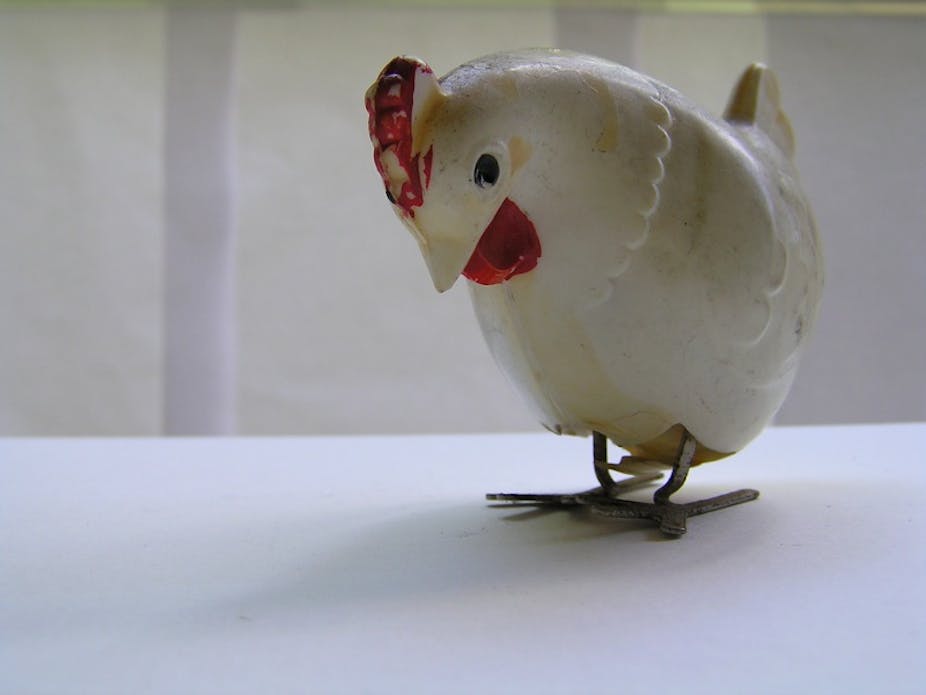Consumers are increasingly concerned about how farm animals are kept, raised, transported, and slaughtered. Most people show their concern by buying “ethical” farm products, such as free-range eggs and organic meats. Consumers should not have to undertake extensive research to get a general idea of where their food comes from, but can they trust - or even understand - product labelling?
The chicken industry and labelling issues surrounding chickens raised for meat and eggs have been a fixture in the news lately. Late last year, two major chicken producers were taken to the Federal Court by the Australian Competition and Consumer Commission (ACCC) for using advertising and promotional activities to mislead consumers on the welfare of broiler chickens.
The outcome of the case is pending but is likely to hold huge implications for consumers and chicken farmers in Australia.
More recently, the Australian Egg Corporation (AEC) applied to the ACCC to allow producers within the corporation to advertise eggs as “free-range” under a certified trade mark.
The AEC’s proposed stocking density to meet the free-range certification is 20,000 birds per hectare. This represents a huge increase from the 1500 birds per hectare recommended in the Model Code of Practice for the Welfare of Animals.

It is likely that the majority of public comments submitted in response to the AEC’s application will be strongly opposed to the suggested standard. Opposition from animal protection groups is due to a concern for the animal welfare implications following such a dramatic increase in stocking density. Groups such as the Free Range Farmers Association feel that the AEC’s suggested trademark undermines consumer trust in the free-range label in order to charge a higher price for eggs.
Consumer preference for free-range eggs is what compels industry bodies such as the AEC to market their products as animal-friendly. But in doing so there is the risk that the animal-friendly label will become meaningless.
The AEC’s attempts to find consumer support for the increased stocking density has been shrouded in controversy after claims that the organisation hid results of a preliminary survey revealing consumer support of just 7% out of 5000 participants.
An online survey I distributed earlier this year (results soon to be published) to 840 Australians revealed that 68% look for a free-range label when buying eggs and 32% also preferred a free-range label on meat products.
Yet almost 70% of those surveyed said it is difficult or extremely difficult to identify animal-based foods that promote the acceptable treatment of animals.

More than 30% admitted to have limited or no understanding of the label meanings on animal-based foods. When asked if labels for meat and eggs (such as free-range) are defined in legislation, only 29% correctly said no.
Furthermore, when asked if broiler chickens each have approximately one square metre to move around in, 81% were either unsure or incorrectly said yes.
The connection between consumers and farm animals is weakened by the commercial interests of producers. It is in the producers’ best interests to have consumers satisfied with a free-range label rather than being aware of the intricacies of farming methods. As a result, there are sharply polarised perspectives on the ethics of modern farming methods.
We have a situation where an industry group wants to describe a stocking density of 20,000 birds per hectare as “free-range”, set against the opposing views of animal protection groups such as Humane Choice, who strongly believe that the conditions included in the AEC’s Certified Trade Mark proposal do not take hen welfare seriously. The RSPCA highlights the impacts of beak trimming and increased stocking density on hen welfare in their response for the ACCC. In the middle are a lot of well-meaning yet confused consumers.
If the AEC is permitted to increase stocking density of hens by over 1300% and stamp a free-range label on it, are consumers going to be aware of this from the label?
The findings of my study and others of similar nature demonstrate that the message of animal welfare is out there: caged eggs are more frowned upon than ever. But consumers are having a hard time putting their dollar to good use.
We may want farm animals to have sufficient space and resources to lead relatively stress-free lives, but if we allow industry bodies such as the AEC to cash in on the feel-good quality of labels such as free-range, we are doing a disservice to both the animals and ourselves.

